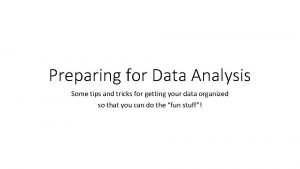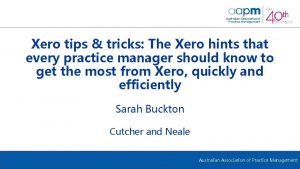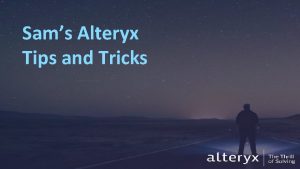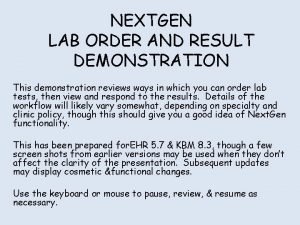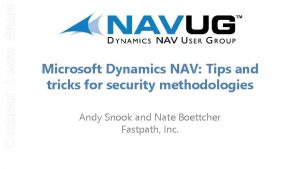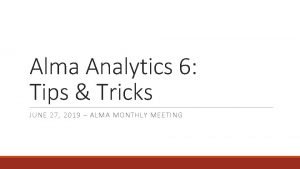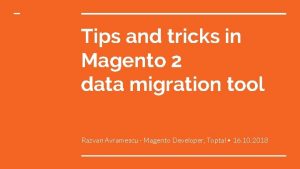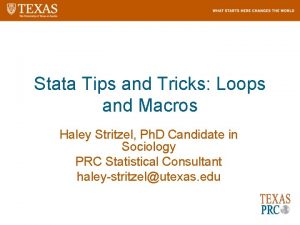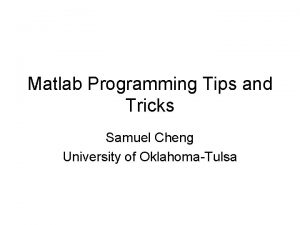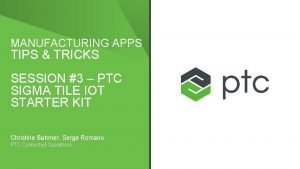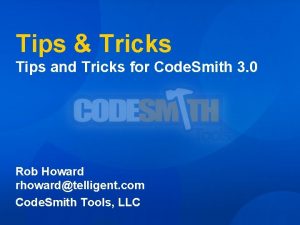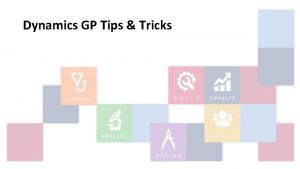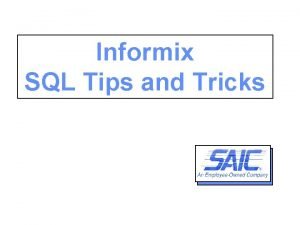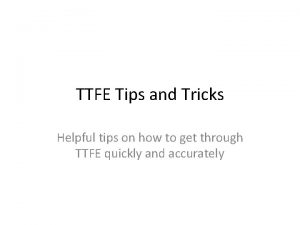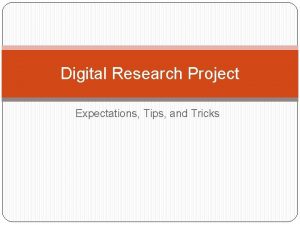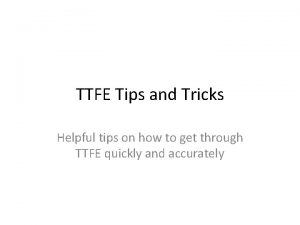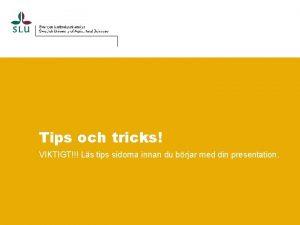Preparing for Data Analysis Some tips and tricks















- Slides: 15

Preparing for Data Analysis Some tips and tricks for getting your data organized so that you can do the “fun stuff”!

Preparing Qualitative Data

Qualitative: Accuracy and Member checking • Have your interviews transcribed • Read the transcripts to make sure they are accurate • Share with your participants to make sure that they agree with the transcript

Qualitative: Organizing your data • Name your files descriptively • For example: • • Program. Lead_Interview_Island. Wood Program. Lead_Interview_BEETLES Instructor_Focus. Group_Section 1. 1 Instructor_Focus. Group_Section 2. 1 • Store them in one place! • Load into a program like Atlas. ti

Qualitative: Coding your data • Read through your transcripts in their entirety to get a “sense” of the data as a whole. • Decide if you will be working from an existing set of codes or if you will develop codes as you go. Or, you may choose to start from a predetermined set of codes and then add as you go. • Keep track of your code definitions in a “codebook”. • Example: “place-based” = “references to place-base learning • Example: “goal: team skills” = “references to a goal for coming to the program being to build team skills

Qualitative: Coding your data • Read through your transcripts one by one and start to assign codes to pieces of text • If you are using a software program like ATLAS. ti the software will keep track of your codes, codebook and coded text. • You can group codes into “themes” that connect ideas

Playing with ATLAS. TI • For this exercise, we will be playing with the K 12 curriculum evaluation transcripts, found on the Google Drive under • Go to http: //atlasti. com/ and download the Trial Version • (Go to “Product” and click on “Free Trial Version”) • Download and install the software, then • Create a new “Project” • Click on “Document” and then “Import Documents”. Upload all 10 documents from this folder: K 12 Curriculum Eval Transcripts

Playing with ATLAS. TI • Start with any transcript you’d like and read through until you see an idea you’d like to code • Select the text, then click on “Add code”. Create or assign a code that fits the text. If you are creating a new code, type the definition in the “Memo” box. • Once you have a few codes that could be grouped into a theme or broader category (for example: philosophy or goals), go to “Code Group Manager” and add a code group. • Under “Analysis”, Look at code co-occurence, codes by document or

Preparing Quantitative Data

Digitize or download your data • Enter paper-survey data into a spreadsheet file like Excel or Google Sheets • Download data from Qualtrics, Survey Monkey, etc. if you have used an online survey tool

Quantitative: Cleaning and Organizing your data • Group pre and post data, if relevant. Make sure that pre and post surveys are on one line if using SPSS. • Eliminate cases if they are not complete • For example, lacking pre or post, lacking sufficient data, incomplete • Eliminate data that is not needed • For example, timestamp, IP address, etc. • Glance through data to see if there any obvious errors

Quantitative: Cleaning and Organizing your data • Score open-ended questions if they are going to be quantified • Example: open-ended questions that will be assigned a score • Re-code any “reverse coded” items • Assign code-names to columns to indicate the construct they are linked to. • Example: Science Identity questions = Pre. Sci. ID 1, Pre. Sci. ID 2, Pre. Sci. ID 3 etc. • Example: Energy Literacy questions = Pre. EL 1, Pre. EL 2, etc.

Prepare to analyze! • Import your data into an analysis tool like SPSS or R • Start with simple descriptive statistics – number, frequency • Glance through to make sure you have no weird values – correct them if you find them (if you can) or decide if you need to eliminate the data • Define numeric codes for categorical data (e. g. school name, instructor name, gender) • Calculate any cumulative or summative variables (e. g. Science Identity as a sum or mean of 10 science identity questions)

Analyze! • Conduct your statistical tests and report the results!

Playing around with Quantitative Analysis • Go to the MOSS Grad Google Drive and find the datasheet called “MOSS Surveys 2015 -16”. • Download the data as an Excel file • Check the data sheet and review for issues discussed on previous slides • Import data into an analysis program and conduct a few tests (descriptive, t-tests, your choice)
 Data analysis tips and tricks
Data analysis tips and tricks Xero practice manager demo
Xero practice manager demo Alteryx tips
Alteryx tips Nextgen orders
Nextgen orders Fmsi login
Fmsi login Igcse english revision
Igcse english revision Purpose of homework
Purpose of homework Navision tips and tricks
Navision tips and tricks Zhuang wang
Zhuang wang Alma analytics tips and tricks
Alma analytics tips and tricks Magento crud
Magento crud Stata tips and tricks
Stata tips and tricks Matlab tips and tricks
Matlab tips and tricks Sigma tips and tricks
Sigma tips and tricks Accessibility tips and tricks
Accessibility tips and tricks Google scholar tips and tricks
Google scholar tips and tricks
